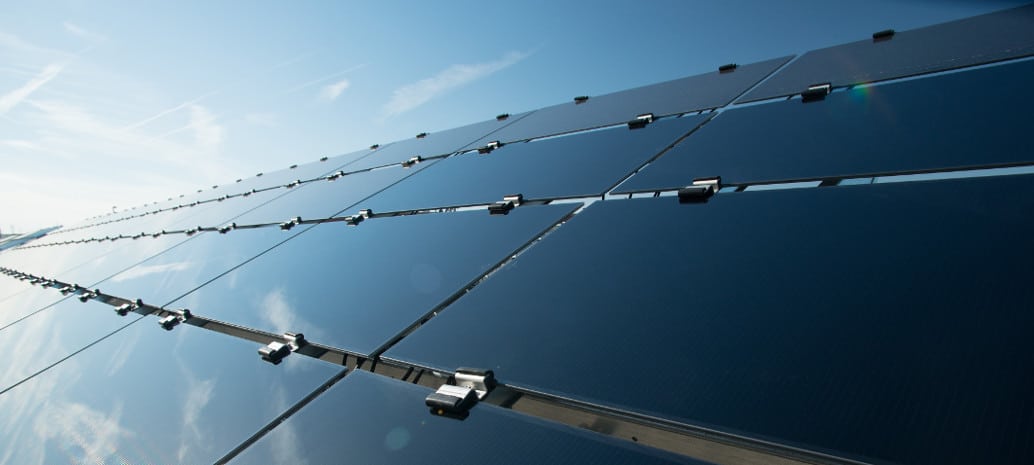First Solar reported strong Q2 results on Wednesday, despite significant impacts from restructuring and lower prices for its products. The company’s income was up 4% year-over-year to $934 million, but due to $86 million in restructuring charges, largely as a result of its decision to drop its TetraSun crystalline silicon venture, the company reported an operating margin of just under 1%, and a net income of only $13.4 million.
Many other solar PV makers would not remain in the black if hit with such heavy charges, and for First Solar this was its least profitable quarter in at least a year.
First Solar also increased production 39% on a per-watt basis to 785 MW, on the back of 100% capacity utilization, coupled with impressive efficiency increases. While there was no change from Q1, First Solar has brought up its fleet average conversion efficiency from 15.4% a year ago to 16.2% during Q2.
One of the reasons for the gap between its increase in output and revenues is the company moving to a larger portion of less profitable module-only sales, although its systems business still represented more than 80% of revenues. Another factor may be the uneven nature of recognizing revenue from project sales.
However, it is the restructuring that was the biggest impact this quarter, which reflected changes in its EPC business and Skytron subsidiary as well as dropping TetraSun. First Solar expects these actions to save it $60-80 million annually, but at a total cost of $105-120 million.
A bigger change at the company is the pending move to its Series 5 product, which involves stringing three of its Series 4 modules on twin steel rails, with a single electrical connection.
First Solar notes that this will increase the inherent efficiency of deploying Series 5, estimating that the cost savings of the new series are the equivalent of 100 basis points. First Solar expects to convert its entire production over to Series 5 by the end of 2017, but only produce 1 GW of Series 5 that year.
First Solar CEO Mark Widmar notes that Series 5 is “relatively capex light”, as its infrastructure adds to but does not replace its existing lines. Eventually First Solar is planning to add new lines to produce its larger format Series 6, but the timing of that is uncertain.
“We will continue to evaluate the business case around Series 6,” said Widmar on the company’s quarterly results call. “That will determine the timing of when we add capacity.”
Like the entire PV industry, First Solar is in a race to lower costs, as lower priced power purchase agreements are eating into the profitability of both modules and projects globally. The company says that in markets such as India it is being choosy about which projects to take on, due to “very aggressive pricing”.
However, Widmar also expressed confidence in meeting this challenge. While the company no longer releases cost-per-watt figures, it estimates that it has been bringing down costs by “mid-to-high teen” percentages on an annual basis.
An estimated 40% of First Solar’s potential bookings remain in the United States. Here it is emphasizing the growing community solar market, which the company estimates is seven times as large as the rooftop PV market.
In keeping with its practice of issuing press releases with positive news on the same day as less-than-ideal quarterly results, First Solar today announced that it has booked 121 MW-DC of community solar projects in the United States. Several of these projects totaling 41 MW-DC are currently under construction in partnership with M+W Energy, and others are expected to begin construction by the end of 2016.
And despite the slim profitability in Q2, First Solar predicts that the rest of the year will look better. The company has maintained its forecast of $3.8-4.0 billion in 2016 revenue, at a 5-7% operating margin.
Update: This article was changed at 8:12 AM Eastern Time (U.S.) on August 4 to correct what the author felt was a mischaracterization of First Solar’s results. No factual information has been changed.
This content is protected by copyright and may not be reused. If you want to cooperate with us and would like to reuse some of our content, please contact: editors@pv-magazine.com.









By submitting this form you agree to pv magazine using your data for the purposes of publishing your comment.
Your personal data will only be disclosed or otherwise transmitted to third parties for the purposes of spam filtering or if this is necessary for technical maintenance of the website. Any other transfer to third parties will not take place unless this is justified on the basis of applicable data protection regulations or if pv magazine is legally obliged to do so.
You may revoke this consent at any time with effect for the future, in which case your personal data will be deleted immediately. Otherwise, your data will be deleted if pv magazine has processed your request or the purpose of data storage is fulfilled.
Further information on data privacy can be found in our Data Protection Policy.